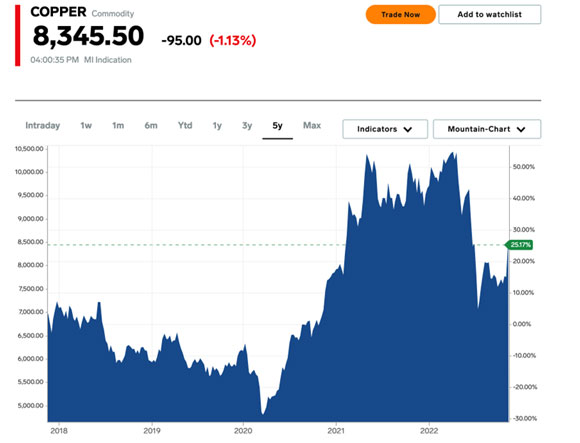In late September, Hurricane Ian passed through the US state of Florida, leaving a trail of destruction and electricity blackouts.
In fact, more than two million businesses and residences lost power because of the hurricane.
This included Westley and Sarah Ferguson from Haines City in Orlando.
The Fergusons may not have had any power, but they did have a Ford F-150 Lightning.
As I’ve mentioned before, the electric truck can be used as an emergency backup generator for a home during a blackout.
The couple ran a basic setup to keep things going until the power came back.
That is, they plugged extension cords into the Ford’s outlets to power their refrigerator, lamps, fans, and an electric stovetop to cook a beef stew.
They even turned on their TV and invited another couple over to spend the evening watching movies and listening to jazz records.
The story, which recently ran on Bloomberg Green, shows how electric vehicles (EVs) could become quite handy during an emergency blackout.
Of course, it’s not just EVs.
A couple of weeks before Hurricane Ian hit Florida, Hurricane Fiona slammed Puerto Rico, leaving the ENTIRE island without power.
Only those with backup generators or rooftop solar had power.
But when the power had still not come back after several days, even those generators started running out of fuel. The US National Guard had to step in and bring diesel to keep the lights on at hospitals and supermarkets.
The point is that there are clear advantages to renewables during an emergency. As Cathy Kunkel from CAMBIO PR said:
‘Everyone in Puerto Rico wants rooftop solar, because the benefits are so obvious. No one wants to depend on a grid that leaves them in the dark for a month.’
Renewable energy is something I’m very bullish about. I see it as a big step up from our current energy system.
In fact, a study by Stanford University showed that a grid powered by 100% renewables would avoid blackouts and have a reduced risk of blackouts in extreme weather.
But what I like is that renewable energy allows you to create your own decentralised energy, independent from the grid.
What’s more, it’s a system that allows electricity to flow.
What I mean is that in this new system, your car and your home aren’t just disconnected energy entities. Renewables allow energy to move where it’s needed, whether that’s to power a car, a home, or even an entire region.
We’re going to need a lot of copper
While lithium has been getting all the headlines, copper will be fundamental for the energy transition.
In fact, Goldman Sachs has recently called it the ‘new oil’.
You see, an electric vehicle needs 2.5-times more copper than an internal combustion one.
And solar and offshore wind require 2–5-times more copper per megawatt of installed capacity than the power that comes from using natural gas or coal.
And then, of course, you need copper for all that wiring for energy transmission.
All in all, copper demand is expected to double from 25 million metric tonnes today to 50 in 2035.
S&P Global expects that the gap between supply and demand could start to show as soon as the middle of this decade, with shortfalls reaching as high as 9.9 million metric tonnes by 2035.
As you can see below, copper prices hit highs in 2021 and 2022 as the transition accelerated. While prices dropped earlier this year, they’ve been holding on strong at just above US$7,500.
|
|
|
Source: Business Insider |
In the last couple of weeks, though, copper prices have been climbing fast — sitting above US$8,300 at the time of writing.
There’s been plenty driving the price up.
From China’s relaxing of its COVID rules to a weakening US dollar.
But there’s also been reports that copper stocks have been running low.
Commodity deficits are increasing
Copper is currently used in everything for our economy, and unless much more copper supply comes our way, we could be in for a shortfall.
It takes years to get a copper mine going. That’s not to mention there’s been a lack of investment or that copper ore grades have been declining…and that mining will need to become more environmentally friendly during the transition.
In short, we could be heading for an epic copper supply crunch, one that could keep copper prices high for years to come.
As S&P Global put it recently in a report (emphasis added):
‘In the 21st century, copper scarcity may emerge as a key destabilizing threat to international security. Projected annual shortfalls will place unprecedented strain on supply chains. The challenges this poses are reminiscent of the 20th-century scramble for oil but may be accentuated by an even higher geographic concentration for copper resources and the downstream industry to refine it into products.’
And speaking of scarcity…
My colleague James Cooper — a trained geologist and commodities expert — is holding a free event today on this very topic.
During his presentation ‘The Age of Scarcity’, he’ll be talking about the coming commodities boom and will show a strategy to benefit from it.
You can access it here.
All the best,
 |
Selva Freigedo,
For Money Morning
Selva is also the Editor of New Energy Investor, a newsletter that looks for opportunities in the energy transition. For information on how to subscribe, click here.


